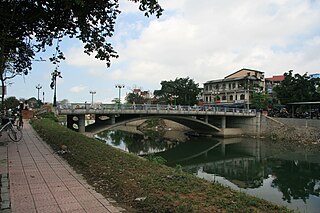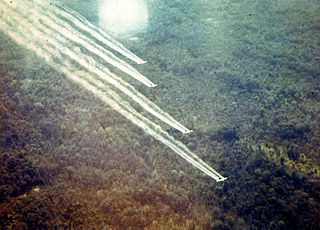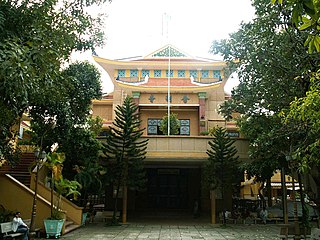 W
WThe 16th Street Baptist Church bombing was a white supremacist terrorist bombing of the 16th Street Baptist Church in Birmingham, Alabama, on Sunday, September 15, 1963. Four members of a local Ku Klux Klan chapter planted 19 sticks of dynamite attached to a timing device beneath the steps located on the east side of the church.
 W
WThe November 1963 Iraqi coup d'état took place between November 13 and November 18, 1963 when, following internal party divisions, pro-Nasserist Iraqi officers led a military coup within the Ba'ath Party. Although the coup itself was bloodless, 250 people were killed in related actions.
 W
WThe 1963 Argentine Navy revolt was an armed confrontation by elements of the Argentine military that lasted from 21 September 1962 to 5 April 1963. The revolt was attempted by military officers who wanted the government to take a hardline stance against the political participation of Peronist politicians, the culmination of the conflict between Azules and Colorados. The revolt failed to gain much support in the Army and Air Force, and these two branches suppressed the uprising after some fighting that left 24 dead in both sides. The Argentine elections of 1963 proceeded as planned in July and the Navy saw a reduction of its influence.
 W
WThe demonstrations of June 5 and 6, also called the events of June 1963 or the 15 Khordad uprising, were protests in Iran against the arrest of Ayatollah Ruhollah Khomeini after his denouncement of Iranian Shah Mohammad Reza Pahlavi and Israel. The Shah's regime was taken by surprise by the massive public demonstrations of support, and although these were crushed within days by the police and military, the events established the importance and power of (Shia) religious opposition to the Shah, and Khomeini as a major political and religious leader. Fifteen years later, Khomeini was to lead the Iranian Revolution which overthrew the Shah and his Pahlavi dynasty and established the Islamic Republic of Iran.
 W
WIn November 1963, President Ngô Đình Diệm of South Vietnam was deposed by a group of Army of the Republic of Vietnam officers who disagreed with his handling of both the Buddhist crisis and the Viet Cong threat to the regime. In South Vietnam, the coup was referred to as Cách mạng 1-11-63.
 W
WThe 1963 Syrian coup d'état, referred to by the Syrian government as the 8 March Revolution, was the successful seizure of power in Syria by the military committee of the Syrian Regional Branch of the Arab Socialist Ba'ath Party. The planning and the unfolding conspiracy was inspired by the Iraqi Regional Branch's successful military coup.
 W
WThe Angolan War of Independence, called in Angola the Luta Armada de Libertação Nacional, began as an uprising against forced cultivation of cotton, and it became a multi-faction struggle for the control of Portugal's overseas province of Angola among three nationalist movements and a separatist movement. The war ended when a leftist military coup in Lisbon in April 1974 overthrew Portugal's Estado Novo regime, and the new regime immediately stopped all military action in the African colonies, declaring its intention to grant them independence without delay.
 W
WThe Battle of Ấp Bắc was a major battle fought on 2 January 1963 during the Vietnam War, in Định Tường Province, South Vietnam. On 28 December 1962 US intelligence detected the presence of a radio transmitter along with a sizable force of Viet Cong (VC) soldiers, reported to number around 120, in the hamlet of Ap Tan Thoi in Dinh Tuong Province, home of the Army of the Republic of South Vietnam (ARVN) 7th Infantry Division. To destroy the VC force, the South Vietnamese and their US advisers planned to attack Ap Tan Thoi from three directions by using two provincial Civil Guard battalions and elements of the 11th Infantry Regiment, ARVN 7th Infantry Division. The infantry units would be supported by artillery, M113 armored personnel carriers (APCs), and helicopters.
 W
WThe Bristol Bus Boycott of 1963 arose from the refusal of the Bristol Omnibus Company to employ Black or Asian bus crews in the city of Bristol, England. In line with many other British cities at the time, there was widespread racial discrimination in housing and employment against so-called "Coloureds". An organisation founded by Roy Hackett and led by youth worker Paul Stephenson as the spokesperson of the group which included Owen Henry, Audley Evans, Prince Brown and Guy Bailey and the West Indian Development Council, the boycott of the company's buses by Bristolians lasted for four months until the company backed down and overturned their discriminative colour bar policy.
 W
WThe Communist insurgency in Sarawak occurred in Malaysia from 1962 to 1990, and involved the North Kalimantan Communist Party and the Malaysian Government. It was one of the two Communist insurgencies to challenge the former British colony of Malaysia during the Cold War. As with the earlier Malayan Emergency (1948–1960), the Sarawak Communist insurgents were predominantly ethnic Chinese, who opposed to British rule over Sarawak and later opposed the merger of the state into the newly created Federation of Malaysia. The insurgency was triggered by the 1962 Brunei Revolt, which had been instigated by the left-wing Brunei People's Party in opposition to the proposed formation of Malaysia.
 W
WThe Double Seven Day Scuffle was a physical altercation on July 7, 1963, in Saigon, South Vietnam. The secret police of Ngô Đình Nhu—the brother of President Ngô Đình Diệm—attacked a group of US journalists who were covering protests held by Buddhists on the ninth anniversary of Diệm's rise to power. Peter Arnett of the Associated Press (AP) was punched on the nose, and the quarrel quickly ended after David Halberstam of The New York Times, being much taller than Nhu's men, counterattacked and caused the secret police to retreat. Arnett and his colleague, the Pulitzer Prize-winning journalist and photographer Malcolm Browne, were later accosted by policemen at their office and taken away for questioning on suspicion of attacking policemen.
 W
WThe Guinea-Bissau War of Independence was an armed independence conflict that took place in Portuguese Guinea between 1963 and 1974. Fought between Portugal and the African Party for the Independence of Guinea and Cape Verde, an armed independence movement backed by Cuba and the Soviet Union, the war is commonly referred to as "Portugal's Vietnam" due to the large numbers of men and amounts of material expended in a long, mostly guerrilla war and the internal political turmoil it created in Portugal. The war ended when Portugal, after the Carnation Revolution of 1974, granted independence to Guinea-Bissau, followed by Cape Verde a year later.
 W
WThe Huế chemical attacks occurred on 3 June 1963, when soldiers of the Army of the Republic of Vietnam (ARVN) poured liquid chemicals from tear gas grenades onto the heads of praying Buddhists in Huế, South Vietnam. The Buddhists were protesting against religious discrimination by the regime of the Roman Catholic President Ngô Đình Diệm. The attacks caused 67 people to be hospitalised for blistering of the skin and respiratory ailments.
 W
WThe Huế Phật Đản shootings were the deaths of nine unarmed Buddhist civilians on 8 May 1963 in the city of Huế, South Vietnam at the hands of the army and security forces of the government of Ngô Đình Diệm, a Roman Catholic. The army and police fired guns and launched grenades into a crowd of Buddhists who had been protesting against a government ban on flying the Buddhist flag on the day of Phật Đản, which commemorates the birth of Gautama Buddha. Diệm denied governmental responsibility for the incident and blamed the Việt Cộng, which added to discontent among the Buddhist majority.
 W
WIn the Vietnam War, after the assassinations of Ngo Dinh Diem and John F. Kennedy in late 1963 and the Gulf of Tonkin incident in 1964 and the continuing political instability in the South, the United States made a policy commitment to begin joint warfare in South Vietnam, a period of gradual escalation and Americanization, involving the commitment of large-scale combat forces from the United States and allied countries. It was no longer assumed the Republic of Vietnam could create a desirable situation without major external assistance. This phase of the war lasted until the election of Richard Nixon, and the change of U.S. policy to Vietnamization, or giving the main combat role back to the South Vietnamese military.
 W
WThe Lobster War was a dispute over spiny lobsters which occurred from 1961 to 1963 between Brazil and France. The Brazilian government refused to allow French fishing vessels to catch spiny lobsters 100 miles (160 km) off the Brazilian northeast coast, arguing that lobsters "crawl along the continental shelf", while the French maintained that "lobsters swim" and that, therefore, they might be caught by any fishing vessel from any country. The dispute was resolved unilaterally by Brazil, which extended its territorial waters to a 200-mile zone, taking in the disputed lobsters' bed.
 W
WThe arrest and assassination of Ngô Đình Diệm, the president of South Vietnam, marked the culmination of a successful coup d'état led by General Dương Văn Minh on 1 November 1963. The coup was the culmination of nine years of autocratic and nepotistic family rule in South Vietnam. Discontent with the Diệm regime had been simmering below the surface and exploded with mass Buddhist protests against long-standing religious discrimination after the government shooting of protesters who defied a ban on the flying of the Buddhist flag.
 W
WOperation Grandslam was an offensive undertaken by United Nations peacekeeping forces from 28 December 1962 to 15 January 1963 against the gendarmerie of the State of Katanga, a secessionist state rebelling against the Republic of the Congo in central Africa. The Katangese forces were decisively defeated and Katanga was forcibly reintegrated into the Congo.
 W
WThe Ramadan Revolution, also referred to as the 8 February Revolution and the February 1963 coup d'état in Iraq, was a military coup by the Ba'ath Party's Iraqi-wing which overthrew the Prime Minister of Iraq, Abd al-Karim Qasim in 1963. It took place between 8 and 10 February 1963. Qasim's former deputy, Abdul Salam Arif, who was not a Ba'athist, was given the largely ceremonial title of President, while prominent Ba'athist general Ahmed Hassan al-Bakr was named Prime Minister. The most powerful leader of the new government was the secretary general of the Iraqi Ba'ath Party, Ali Salih al-Sa'di, who controlled the National Guard militia and organized a massacre of hundreds—if not thousands—of suspected communists and other dissidents following the coup.
 W
WOperation Ranch Hand was a U.S. military operation during the Vietnam War, lasting from 1962 until 1971. Largely inspired by the British use of 2,4,5-T and 2,4-D during the Malayan Emergency in the 1950s, it was part of the overall chemical warfare program during the war called "Operation Trail Dust". Ranch Hand involved spraying an estimated 20 million U.S. gallons (76,000 m3) of defoliants and herbicides over rural areas of South Vietnam in an attempt to deprive the Viet Cong of food and vegetation cover. Areas of Laos and Cambodia were also sprayed to a lesser extent. Nearly 20,000 sorties were flown between 1961 and 1971.
 W
WThe Sand War or the Sands War was a border conflict between Algeria and Morocco in October 1963. It resulted largely from the Moroccan government's claim to portions of Algeria's Tindouf and Béchar provinces. The Sand War led to heightened tensions between the two countries for several decades. It was also notable for a short-lived Cuban and Egyptian military intervention on behalf of Algeria, and for ushering in the first multinational peacekeeping mission carried out by the Organisation of African Unity.
 W
WThe Simba rebellion of 1963–65, also known as the Orientale Revolt, was a rebellion in the Democratic Republic of the Congo which took place within the wider context of the Congo Crisis and the Cold War. The rebellion, located in the east of the country, was led by the followers of Patrice Lumumba, who had been ousted from power in 1960 by Joseph Kasa-Vubu and Joseph-Désiré Mobutu and subsequently killed in January 1961 in Katanga. The rebellion was contemporaneous with the Kwilu Rebellion led by fellow Lumumbist Pierre Mulele in central Congo.
 W
WThe 1963 Togolese coup d'état was a military coup that occurred in the West African country of Togo on 13 January 1963. The coup leaders — notably Emmanuel Bodjollé, Étienne Eyadéma and Kléber Dadjo — took over government buildings, arrested most of the cabinet, and assassinated Togo's first president, Sylvanus Olympio outside the American embassy in Lomé. The coup leaders quickly brought Nicolas Grunitzky and Antoine Meatchi, both of whom were exiled political opponents of Olympio, together to form a new government. While the government of Ghana and its president Kwame Nkrumah were implicated in the coup and assassination of Olympio, full investigation was never completed and the international outcry eventually died down. The event was important as the first coup d'état in the French and British colonies of Africa that achieved independence in the 1950s and 1960s, and Olympio is remembered as one of the first heads of state to be assassinated during a military coup in Africa.
 W
WThe Tuareg rebellion of 1962–1964, sometimes called the First Tuareg Rebellion or the Alfellaga, was an insurgency by populations of what is now northern Mali begun shortly after the nation achieved independence from France in 1960. This short revolt could only be repressed with the entry into the conflict of Morocco and Algeria in 1963, which handed over the 35 leaders of the counter-rebellion, then imposed a military authority on the Tuareg regions.
 W
WThe defeat of the South Vietnamese Army of the Republic of Vietnam (ARVN) in a battle in January set off a furious debate in the United States on the progress being made in the war against the Viet Cong (VC) in South Vietnam. Assessments of the war flowing into the higher levels of the U.S. government in Washington, D.C. were wildly inconsistent, some citing an early victory over the VC, others a rapidly deteriorating military situation. Some senior U.S. military officers and White House officials were optimistic; civilians of the Department of State and the Central Intelligence Agency (CIA), junior military officers, and the media were decidedly less so. Near the end of the year, U.S. leaders became more pessimistic about progress in the war.
 W
WThe 1959 to 1963 phase of the Vietnam War started after the North Vietnamese had made a firm decision to commit to a military intervention in the guerrilla war in the South Vietnam, a buildup phase began, between the 1959 North Vietnamese decision and the Gulf of Tonkin Incident, which led to a major US escalation of its involvement. Vietnamese communists saw this as a second phase of their revolution, the US now substituting for the French.
 W
WThe Xá Lợi Pagoda raids were a series of synchronized attacks on various Buddhist pagodas in the major cities of South Vietnam shortly after midnight on 21 August 1963. The raids were executed by the Army of the Republic of Vietnam Special Forces under Colonel Lê Quang Tung, and combat police, both of which took their orders directly from Ngô Đình Nhu, younger brother of the Roman Catholic President Ngô Đình Diệm. Xá Lợi Pagoda, the largest pagoda in the South Vietnamese capital, Saigon, was the most prominent of the raided temples. Over 1,400 Buddhists were arrested, and estimates of the death toll and missing ranged up to the hundreds. In response to the Huế Vesak shootings and a ban on the Buddhist flag in early May, South Vietnam's Buddhist majority rose in widespread civil disobedience and protest against the religious bias and discrimination of the Catholic-dominated Diệm government. Buddhist temples in major cities, most prominently the Xá Lợi pagoda, became focal points for protesters and assembly points for Buddhist monks from rural areas.